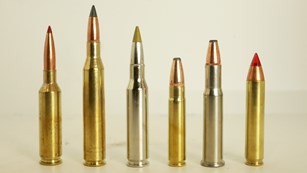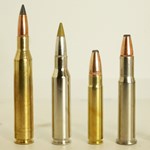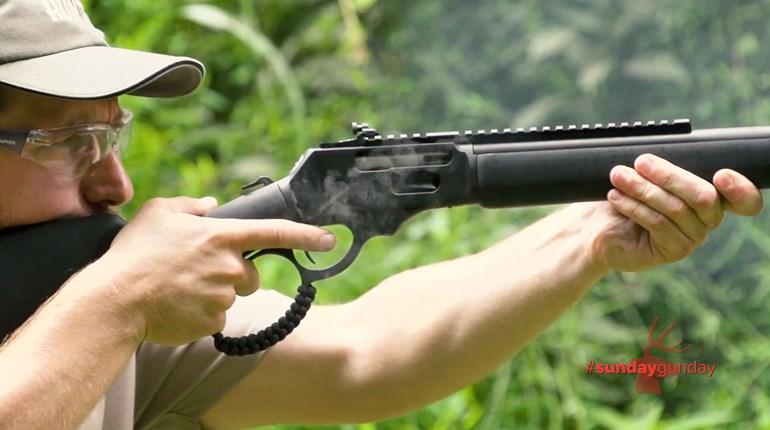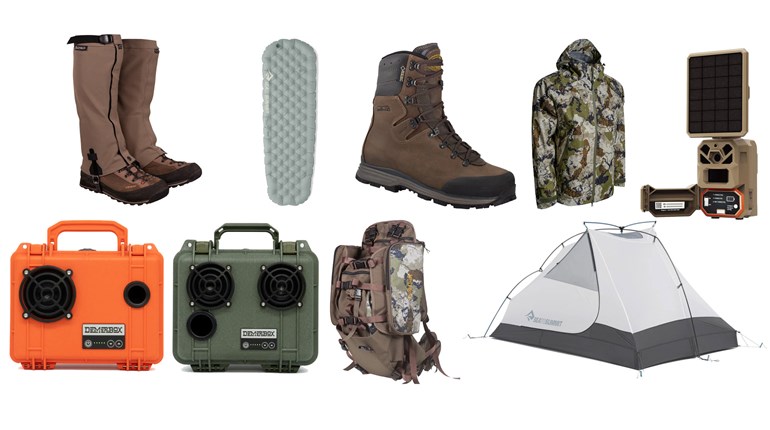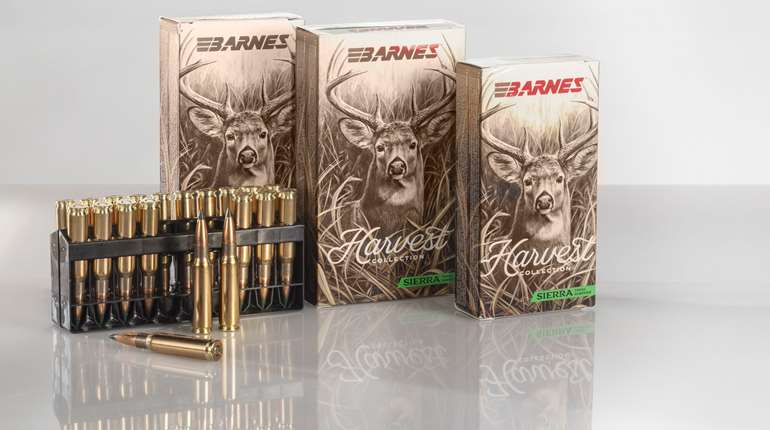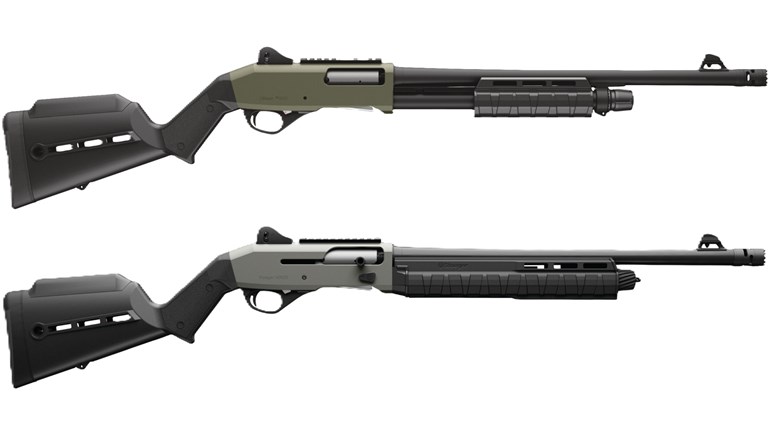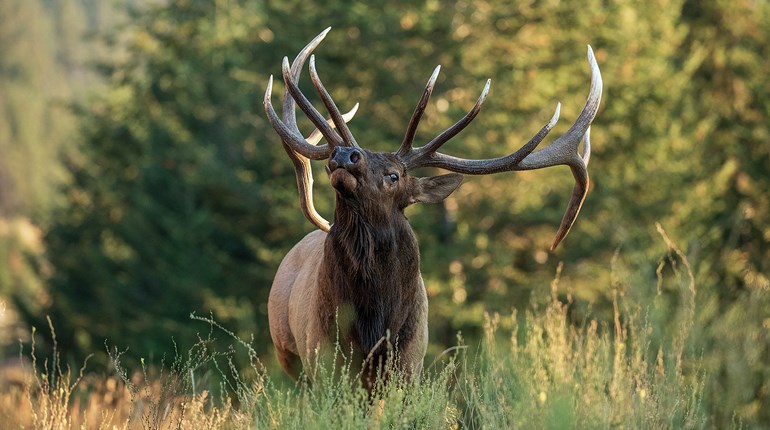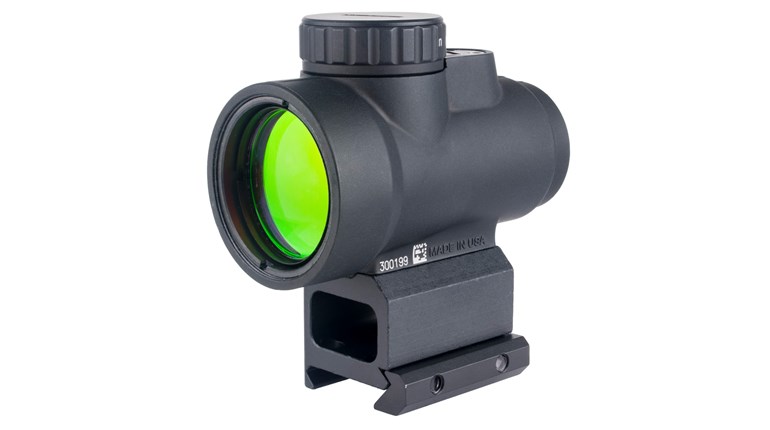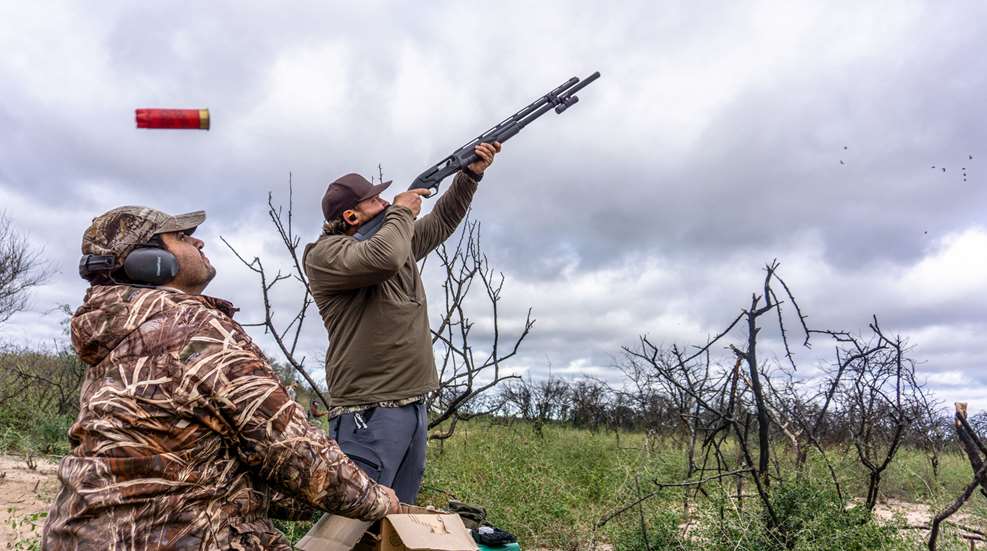
If you want to test a shotgun’s reliability and recoil control, you take it on a high-volume hunt. If you want that trial to more resemble torture than test, you make that a high-volume Argentina dove hunt. As our diesel Hilux pickups jounced down the dirt path, dust swirling around us into an impenetrable cloud, I wondered whether the conditions may be too tall an order for a gas gun like the Savage Renegauge. Nonetheless, I was more than ready to give it a shot.
We were in the Argentine province of Santiago del Estero, only an hour’s drive away from its similarly named capital city. Following a day spent touring around Buenos Aires, we hopped a flight to this northern province deep in the country’s agricultural heartland. It was immediately easy to see why we had come. Birds abounded amid the flatland stretches of cotton and corn, sometimes seeming to nearly blot out the sun in their flight. This trip originally had four quarry planned for us—pigeons, doves, ducks and perdiz—but the third of these had to be called off. The avian flu—which had ravaged waterfowl populations in the Northern Hemisphere the previous season—had also occurred in the south, leaving affected birds scattered in its wake. While the majority of cases were constrained to domestic birds, the Federal Agro Sanitary Authority (SENASA) decided that as ducks are migratory, they possess an additional threat of transmission. The decision was reversed prior to our hunt due to an unexpectedly small number of cases, but it was too late: The provinces had uniformly closed duck hunting for the season and would not review their decisions. Undaunted, we resolved to chase what we could.
As we tucked into some delicious fare at the Lomitas Lodge our first evening, we went over the schedule for the week with our host, Roberto Zovich, and his staff. The lodge around us was reminiscent of a 19th-century estância, its brick walls scattered with taxidermy, interspersed by shadowboxes of hunting and ranching memorabilia. Settling into these comfortable surroundings, we began to yield to the anticipation of what was to come. Ducks off the menu simply meant more days to down the remaining three species, and we were eager for the challenge.
The primary target of our trip—doves—earned its status at the top of our list due to the havoc they wreak on the local economy. The sheer scale of farming in Santiago del Estero has led doves to descend on the area in droves, leaving agricultural carnage in their wake. Doves eat the grain and seeds of almost every crop grown in the area, even devastating full-grown ears of corn, as they follow behind parakeets that crack open the husks with their hard beaks. Once dropped, some of the doves are breasted and used by the hunting lodges, though far more are collected by locals for their own tables; seeing groups of farmers gathered around at the end of a hunt scouring the fields for birds was a sight I became well accustomed to in the following days. As we shuffled off to our rooms dreaming of bird-filled skies, few of us realized just what awaited us.
A mere two and a half days later I stood in a field, left hand numb from lack of blood flow and bicep sore from hefting my scattergun. Somewhere between 150 and 202 boxes of shells had left my barrel. That’s between 3,600 and 4,040 rounds of 12-gauge, for those following along at home. I had come to a merciful pause, because my Renegauge had finally begun to misfire. After literally thousands of rounds without even a cursory cleaning, the firing pin channel was carboned up enough to deliver only light strikes to my primer. I was soon to learn to regret my relief. While the gun’s longevity was impressive, it was in comparison to the alternatives that its other qualities really shone through.
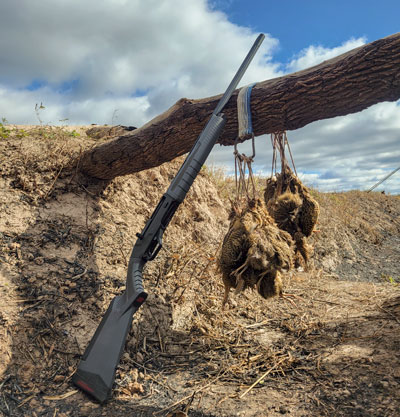
Hefting an unfamiliar 20-gauge, I was immediately struck by its comparative lightness to the gas gun. I chuckled to myself: “This will be a cakewalk.” I could not have been more wrong. The first shot unloaded like a kick from a mule. Spoiled by the featherweight recoil of the Renegauge’s Dual Regulating Inline Valve (D.R.I.V.) gas system, I was caught off guard by the sheer force of even a lowly 20-gauge. With the second shot, I realized the importance of the Rengauge’s rubberized comb, as my previously unscathed cheekbone began to develop a bruise. I even began to miss the weight of the big 12, and the stable hold it provided.
Nonetheless, I kept up my course of fire. Standing in the tangled brush adjacent to a nearby ag field, I was given no shortage of shot angles and opportunities with which to test my skills. Large groups of doves flew high overhead, while singles and doubles zipped in low through the twisting branches. Leads, of course, had to be changed accordingly. While it took some time to get re-accustomed to a new firearm, the advantage of an Argentine dove shoot is the sheer scale of the numbers. Sure enough, within a few groups I had the gun figured, and was back to dropping birds with consistency. Doubles and triples fell at my feet with a satisfying thump, plucked cleanly from their darting flight by clouds of Fiocchi lead. Despite this success, I still found something to miss about the Renegauge, as its additional capacity and negligible recoil made it possible to stay on target longer, sometimes dropping five birds in a swing (and later even more, when I affixed the competition-style extended tube). The day eventually finished with a pile of doves down and I returned to camp, eagerly anticipating getting my Savage back in firing order.
Impressively enough, despite firing some 5,785 rounds of 12-gauge on this hunt, this marked the only time my gun needed a true cleaning. As someone who has often shied away from gas guns in favor of their lighter, cleaner, recoil/inertia-operated counterparts, it also provided me with an excellent counterargument in favor of this soft shooter: volume. While it’s well known that gas guns fire the most softly of all action types, Savage’s D.R.I.V. system—which redirects excess gas out valves under the barrel—takes this to a whole new level. It is not often one finds a 12-gauge that recoils less than a 20, and on this hunt that made all the difference. The Renegauge kept me shooting accurately, rapidly and comfortably the entire week. I struggle to think of another shotgun that would have done as well. How would it perform in the more common scenarios of pigeon and perdiz hunting, however? I was about to find out.
I refer to these species as a more common hunt because the style provides an analogue for scenarios more generally encountered by American hunters (fully aside from American pigeon hunters, of course). Pigeons decoy and cup in much like mallards, while hunters hide in brushed-in blinds. Perdiz, meanwhile, are best described as Argentine partridge, hunted on foot over dogs.
The main points of differentiation here would be how well the gun shouldered, swung and—in the case of perdiz—carried. While these factors are important for doves as well, they do not take primacy over recoil dampening—the most important feature to keep shooters in the field longer.

As we waited silently in our blind, pigeons circling overhead, I fingered my crossbolt safety, hand in its familiar position under the trigger guard. As the birds turned into their final, fatal descent, my fellow hunter and I exploded upward, each targeting the bird on our respective side. Our guns barked, and the birds plummeted to earth in a cloud of plumage. Not bad. The gun’s AccuFit system, emblematic of Savage’s commitment to fully user-customizable firearms, had allowed me to adjust not only my drop and length of pull but my comb height as well. For me, the mid-height comb paired with the gun’s slightly taller-than-usual rib made for the perfect setup. This is one of the best features of the firearm—if one combination doesn’t work for you, then there are literally hundreds of other combinations of LOP, drop and comb height to choose from. Don’t believe me? The gun offers plenty of choice as it comes with three different combs, recoil pads and spacers, as well as four bushings and five drop shims. Feel free to check my math, but I’m getting 508 distinct combinations. One hundred pigeons down for each of us, and it was time to turn our thoughts to perdiz. Would the gun prove as appealing when trailing a GSP?

As we followed the dog through the thick brush, hunted only twice per year according to our guides, the Renegauge proved a heavier carry than most upland guns—I certainly wouldn’t grab it for chukar. That said, when the first bird flushed in a blur of brown, the gun was up in a flash, swinging through as its report resounded and the bird fell to earth, a spectacle it repeated four more times for a full limit. While it would be a little silly to suggest the gun’s incredible ergonomics and recoil control aren’t a touch wasted on the low-volume nature of an upland hunt, the gun’s excellent balance—instinctively finding its place on the shoulder—makes it a capable companion nonetheless.
This, really, is the true beauty of the Savage Renegauge. The term “workhorse” is overused in this day and age, but the gun is a real jack of all trades. Its versatile gas system means the gun can run anything, from light-recoiling dove loads to hard-hitting magnums, all while keeping felt recoil incredibly light. The gun’s stock, meanwhile, can be tuned to the shooter’s exact dimensions for optimal comfort whether firing five shots or 5,000. Finally, when the gun is (eventually) fouled, Savage’s intuitive system means the gun can be disassembled and cleaned in a hurry. From doves and ducks to upland birds, or even turkey, the Renegauge will step up without flinching.
As I said goodbye to Argentina, it was hard to believe one single gun had dropped literally thousands of birds of three different species. Despite the magnitude of the numbers and the range of hunting styles, it had accomplished its task without complaint. If there’s one shotgun that can easily do it all, from high volume to high mileage, the Savage Renegauge is it. ah

Savage Renegauge
Little more needs to be said about the prowess of the Renegauge, American Hunter’s 2021 Shotgun of the Year. Its versatility and efficacy in every scenario have been well documented in the surrounding article. Putting some numbers to the gun can help explain what makes it such a paragon of performance, however.
Weighing in at 8 pounds, 1 ounce with a 26-inch barrel—thanks in no small part to its aluminum receiver—the gun provides a good balance between easy shouldering and excellent recoil absorption. Indeed, a choice of a 26- or 28-inch barrel means the gun can be tailored toward throwing 3-inch magnums at ducks or 6 shot at upland game, without sacrificing too much capability and versatility on the other end. A tubular magazine with a four-plus-one capacity of 23/4-inch shotshells can be plugged for waterfowl hunting, or upgraded for high-volume shooting by swapping it for a competition-model magazine extension. As mentioned, length of pull is adjustable from 14.25 inches on the lower end to 15.07 on the upper, a range that covers the gamut of shooters and hunters. Its carbon-steel barrel is Melonited for durability, no matter the hunting conditions. At its muzzle, a red fiber-optic tube is easily acquirable from dawn to dusk—far more so than an old-style gold or painted bead. All these features combine with the revolutionary Savage Dual Regulating Inline Valve (D.R.I.V.) gas system for a shotgun that is easy to shoot accurately, and won’t destroy a shoulder. MSRP is $1,279-$1,349. savagearms.com


